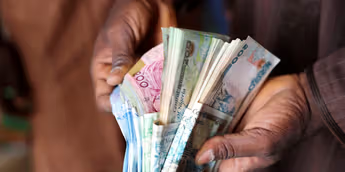This is according to a report released by Bloomberg on Friday, June 28, 2024.
Tracking data from FMDQ, Bloomberg identified devaluation, insufficient dollar liquidity, and market volatility as factors hindering the Central Bank of Nigeria (CBN)’s effort to strengthen the currency.
Other currencies that recorded poor performances in the first six months of the year besides the naira include Egypt’s pound and Ghana’s cedi.
The platform noted that the naira weakened for a ninth straight day to ₦1,510 per dollar by the close of business on Thursday, June 27, 2024.
“The losing streak is the longest since July 2017 and takes the decline since the start of the year to 40 per cent.
“The naira’s performance is the worst among global currencies tracked by Bloomberg beside that of the pound in Lebanon, which is undergoing an economic crisis and witnessing dollarisation,” it reported.
Naira falls from grace to grass
This comes barely two months after the naira emerged as the best-performing currency in the world.
Goldman Sachs, in its March report on Nigeria’s economic realities, rated naira as the best-performing currency in April 2024.
The report also projected that, with the upward swing of the naira in the foreign exchange market at the time, the currency may exchange below ₦1,000 per dollar in the coming months.
The firm added that the naira would appreciate to ₦1,200 per dollar within the next 12 months.
However, it disclosed that the local currency surged 12% against the greenback, adding to a 1% increase in March.
Naira value continues to plummet
As captured in its latest economic report on Nigeria, PricewaterhouseCoopers Limited (PwC) said the naira plummeted against the dollar by 67.8% from an average of ₦461.1 in May 2023 to ₦1,433.80 in May 2024.
“The depreciation took effect despite foreign exchange market reforms by CBN to achieve price discovery and attract liquidity to the market,” PwC stated.
Similarly, Bloomberg’s latest report noted that the currency was volatile between mid-April and May due to the imbalance between demand and supply for the greenback before improvement in dollar inflows in June halted the trend.

